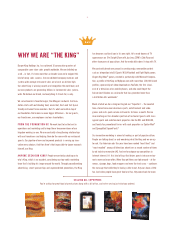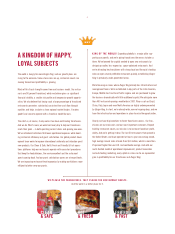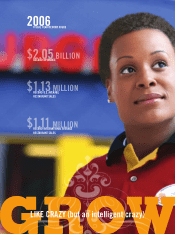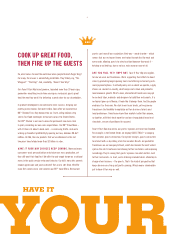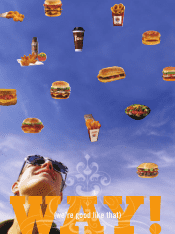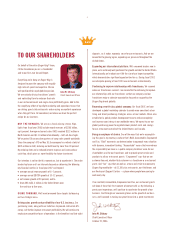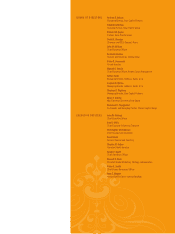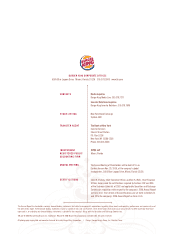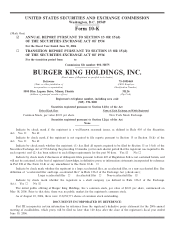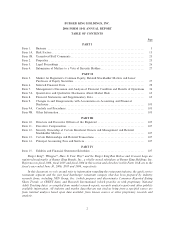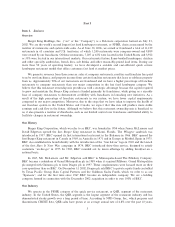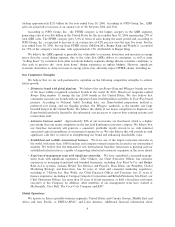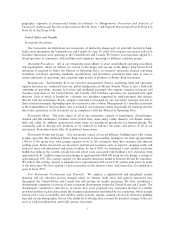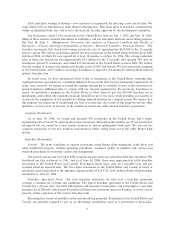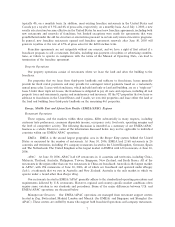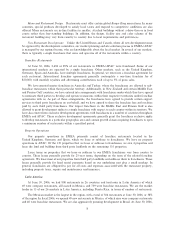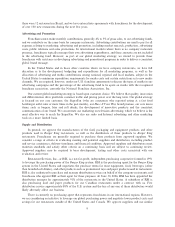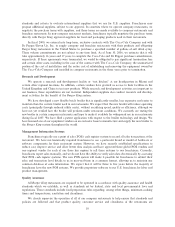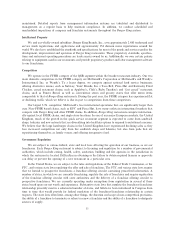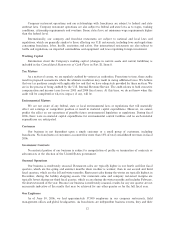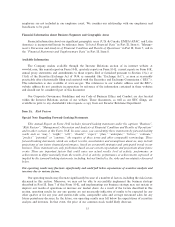Burger King 2006 Annual Report Download - page 15
Download and view the complete annual report
Please find page 15 of the 2006 Burger King annual report below. You can navigate through the pages in the report by either clicking on the pages listed below, or by using the keyword search tool below to find specific information within the annual report.Part I
Item 1. Business
Overview
Burger King Holdings, Inc. (""we'' or the ""Company'') is a Delaware corporation formed on July 23,
2002. We are the world's second largest fast food hamburger restaurant, or FFHR, chain as measured by the
number of restaurants and system-wide sales. As of June 30, 2006, we owned or franchised a total of 11,129
restaurants in 65 countries and U.S. territories, of which 1,240 restaurants were company-owned and 9,889
were owned by our franchisees. Of these restaurants, 7,207 or 65% were located in the United States and 3,922
or 35% were located in our international markets. Our restaurants feature flame-broiled hamburgers, chicken
and other specialty sandwiches, french fries, soft drinks and other reasonably-priced food items. During our
more than 50 years of operating history, we have developed a scalable and cost-efficient quick service
hamburger restaurant model that offers customers fast food at modest prices.
We generate revenues from three sources: sales at company restaurants; royalties and franchise fees paid
to us by our franchisees; and property income from certain franchise restaurants that lease or sublease property
from us. Approximately 90% of our restaurants are franchised and we have a higher percentage of franchise
restaurants to company restaurants than our major competitors in the fast food hamburger category. We
believe that this restaurant ownership mix provides us with a strategic advantage because the capital required
to grow and maintain the Burger King system is funded primarily by franchisees, while giving us a sizeable
base of company restaurants to demonstrate credibility with franchisees in launching new initiatives. As a
result of the high percentage of franchise restaurants in our system, we have lower capital requirements
compared to our major competitors. Moreover, due to the steps that we have taken to improve the health of
our franchise system in the United States and Canada, we expect that this mix will produce more stable
earnings and cash flow in the future. Although we believe that this restaurant ownership mix is beneficial to
us, it also presents a number of drawbacks, such as our limited control over franchisees and limited ability to
facilitate changes in restaurant ownership.
Our History
Burger King Corporation, which we refer to as BKC, was founded in 1954 when James McLamore and
David Edgerton opened the first Burger King restaurant in Miami, Florida. The Whopper sandwich was
introduced in 1957. BKC opened its first international restaurant in the Bahamas in 1966. BKC opened the
first Burger King restaurant in Canada in 1969, in Australia in 1971 and in Europe in Madrid, Spain in 1975.
BKC also established its brand identity with the introduction of the ""bun halves'' logo in 1969 and the launch
of the first Have It Your Way campaign in 1974. BKC introduced drive-thru service, designed to satisfy
customers ""on-the-go'' in 1975. In 1985, BKC rounded out its menu offerings by adding breakfast on a
national basis.
In 1967, Mr. McLamore and Mr. Edgerton sold BKC to Minneapolis-based The Pillsbury Company.
BKC became a subsidiary of Grand Metropolitan plc in 1989 when it acquired Pillsbury. Grand Metropolitan
plc merged with Guinness plc to form Diageo plc in 1997. These conglomerates were focused more on their
core operations than on BKC. On December 13, 2002, Diageo plc sold BKC to private equity funds controlled
by Texas Pacific Group, Bain Capital Partners and the Goldman Sachs Funds, which we refer to as our
""Sponsors'', and for the first time since 1967 BKC became an independent company. We are a holding
company formed in connection with the December 2002 acquisition in order to own 100% of BKC.
Our Industry
We operate in the FFHR category of the quick service restaurant, or QSR, segment of the restaurant
industry. In the United States, the QSR segment is the largest segment of the restaurant industry and has
demonstrated steady growth over a long period of time. According to NPD Group, Inc., which prepares and
disseminates CREST data, QSR sales have grown at an average annual rate of 4.8% over the past 10 years,
3


